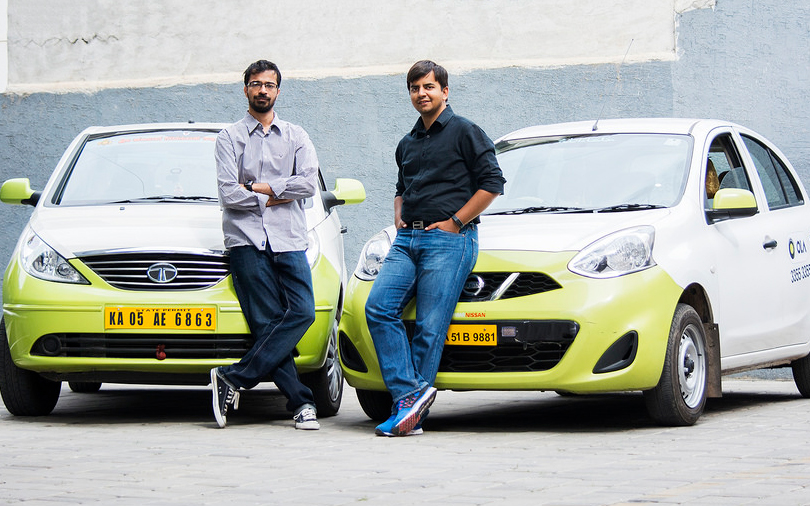
Ola Success Story How Ola Became India's Leading Cab Aggregator
Ola, one of the first companies to change how people travel in India, was started in 2010 by Bhavish Aggarwal and Ankit Bhati, both graduates of IIT Bombay. It began as a small cab service and has since grown into a billion-dollar company, offering a variety of transportation options. Today, Ola is India’s leading cab service, making it easy for drivers and passengers to connect. This incredible growth reflects the founders’ innovative thinking, which transformed the transportation system in India.
In this article, we’ll explore how Ola transformed from a startup to a household name, becoming the go-to service for millions across India.
Early Beginnings and Vision
Bhavish Aggarwal’s idea for Ola was born out of personal frustration. While trying to rent a car for a weekend trip, he encountered issues with availability, pricing, and service quality. This unpleasant experience made him realize the potential in organizing the fragmented cab service market. Teaming up with Ankit Bhati, Aggarwal envisioned a tech-driven platform that could provide customers with a hassle-free cab booking experience.
Ola was launched with a mission to make cab rides more accessible and affordable for the masses. The founders recognized the opportunity to fill a gap in India’s transportation system, where public transport options were limited and unreliable, and private car ownership was not always feasible.
Growth and Expansion
Since its inception, Ola has grown at an extraordinary pace. Initially focused on providing cab services in Mumbai, the company rapidly expanded its operations across India. Ola became synonymous with convenience, allowing users to book a ride through an easy-to-use mobile app. The platform quickly gained traction due to its real-time GPS tracking system, transparent pricing, and flexible payment options, including digital wallets, credit/debit cards, and cash.
Ola’s growth strategy was aggressive. By 2015, the company had expanded to over 100 cities across India. Unlike traditional cab services, Ola offered a range of options for customers, from budget-friendly rides to premium luxury cars, catering to various segments of society.
Read Also: Zomato’s Deepinder Goyal Joins Billionaire Club as Stocks Soar
Diversification of Services
One of the key factors behind Ola’s success has been its ability to diversify its offerings. Over time, Ola introduced services such as:
- Ola Auto: To cater to commuters who preferred auto-rickshaws over cabs, Ola launched Ola Auto, allowing customers to book autos through its app. This further cemented its position in the market by tapping into a larger user base.
- Ola Bike: For quick and affordable travel, especially in congested cities, Ola introduced bike rides, offering faster transportation options in urban areas.
- Ola Outstation: Ola expanded its services beyond city boundaries with Ola Outstation, providing intercity travel solutions.
- Ola Share: A carpooling feature where passengers heading in the same direction could share a ride and reduce costs, thus promoting eco-friendly transportation.
- Ola Electric: To stay ahead of global trends and reduce carbon emissions, Ola invested heavily in electric vehicles, launching Ola Electric with a mission to build the future of sustainable transport in India.
Innovation and Technology
Technology is at the core of Ola’s operations. The company’s app, which allows users to book, track, and pay for rides, is a key driver of its success. Ola continuously invests in improving its technological infrastructure, ensuring that users experience minimal waiting times, accurate ETAs, and easy access to driver details.
Additionally, Ola utilizes data analytics to enhance the customer experience, predicting demand in real-time and ensuring that drivers are available when needed. This focus on technology enables the platform to serve millions of customers each day, helping it maintain its competitive edge over rivals like Uber.
Funding and Valuation
Ola’s journey to becoming India’s leading cab aggregator has been fueled by substantial investment from global and domestic investors. Over the years, the company has raised billions in funding from major venture capital firms such as SoftBank, Tiger Global, and Sequoia Capital. These funds have not only allowed Ola to expand its operations across India but also facilitated its foray into international markets like Australia, New Zealand, and the UK.
As of 2023, Ola’s valuation is estimated at over $6 billion, making it one of India’s most valuable startups. This success is a reflection of Bhavish Aggarwal and Ankit Bhati’s vision and leadership, which have steered the company through multiple phases of growth and competition.
Challenges Faced by Ola
No success story is without challenges, and Ola is no exception. One of the biggest hurdles the company has faced is competition from global giants like Uber. Uber’s entry into the Indian market in 2013 created fierce competition, forcing both companies to engage in price wars and driver acquisition strategies.
Ola also faced regulatory hurdles in various states, particularly around issues of driver licensing and surge pricing. Despite these challenges, Ola’s deep understanding of the Indian market, its ability to innovate, and its customer-centric approach allowed it to maintain its leadership position.
The Role of Bhavish Aggarwal and Ankit Bhati
The vision and leadership of Bhavish Aggarwal and Ankit Bhati have been instrumental in Ola’s success. Bhavish, in particular, has been the face of the company, driving its strategic direction and expansion plans. Under his leadership, Ola has diversified its services, embraced electric vehicles, and expanded internationally.
Ankit Bhati, the co-founder and CTO, played a pivotal role in building the technology platform that powers Ola. His expertise in software development and engineering helped create a seamless user experience, making Ola a trusted brand in India’s transportation sector.
Future of Ola
Ola’s future looks promising as it continues to innovate and expand. The company’s foray into electric vehicles through Ola Electric is a clear indication that it is focused on long-term sustainability. With a strong presence in India and growing operations in international markets, Ola is well-positioned to remain a leader in the mobility space.
Additionally, Ola’s commitment to embracing new technologies, including artificial intelligence and machine learning, will likely shape its future growth. These advancements will further enhance the customer experience, optimize operations, and open new opportunities for the company in an increasingly tech-driven world.
Conclusion
Ola’s rise to the top of India’s cab aggregation industry is a story of innovation, perseverance, and strategic execution. Founded by Bhavish Aggarwal and Ankit Bhati, the company has grown from a small startup to a global brand, serving millions of users daily. By focusing on customer needs, embracing technology, and diversifying its services, Ola has not only transformed transportation in India but also set the stage for future growth and success.
As Ola continues to evolve, one thing is clear: it will remain a dominant player in the mobility sector, both in India and abroad.



